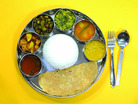“The idea has been to promote Make in India, skills of India, MSME exporters as well as to impact the world trade with larger sectors such as defence, agriculture and the larger conglomerates. While doing this, the government streamlined multiple things by combining them into two different schemes - Merchandise Exports from India Scheme (MEIS) and Service Exports from India Scheme (SEIS), which is manufacturing and services sector and incentivising its exports so that they could compete with the world,” says Mahavir Pratap Sharma, Chairman, Carpet Export Promotion Council.
Schemes such as Export Promotion Capital Goods (EPCG), meant to enable import of capital goods and to boost competitiveness of India’s export, have also been modified to include more of the domestic Indian market in its ambit. “Schemes like the EPCG were altered a bit wherein 100% compliance did not have to be for exports. It was brought down to 75% which meant that the domestic tariff areas or the sales within the domestic tariff areas were also important for the government and they realised for the first time that the domestic Indian market is equally important,” adds Sharma.
The entire process, feels Sharma, helped in making the system less corrupt, more efficient and faster. The beginning step of starting with an Importer Exporter Code (IEC) followed by opening of a bank account online to registration for an Export Oriented Unit (EOU) with an Export Promotion Council (EPC) and then putting up the documents on the customs portal, has become much smoother. Exporting the product is the next step with refunds on duty drawbacks and GST coming through - all these steps helped in bringing seamlessness and functionality for the industry.
Sharma cites his own experience where compared to 2014-15, he now saves about seven days since he does not have to send couriers, scan, fax to various departments, government offices, banks or to buyers.
“I think this initiative under the umbrella of the Ministry of Commerce helped to create a perfect system that could benefit a range of businesses. The whole FTP was based on everything being online and I think we have achieved that finally,” asserts Sharma.












 Get Unlimited Access to The Economic Times
Get Unlimited Access to The Economic Times
